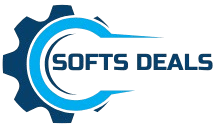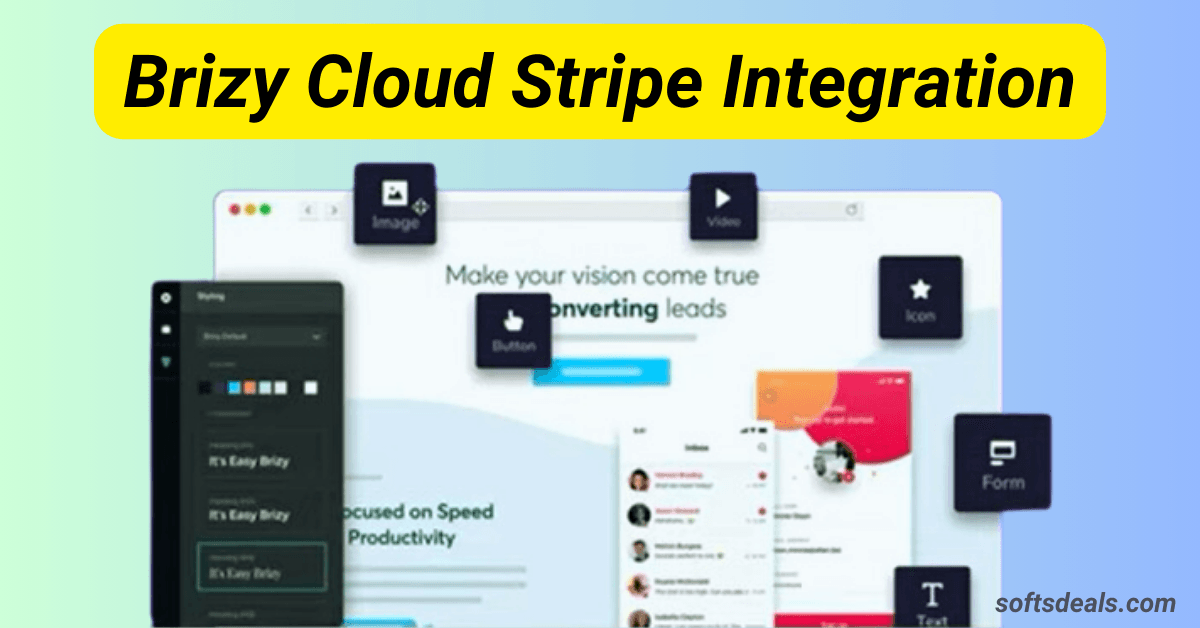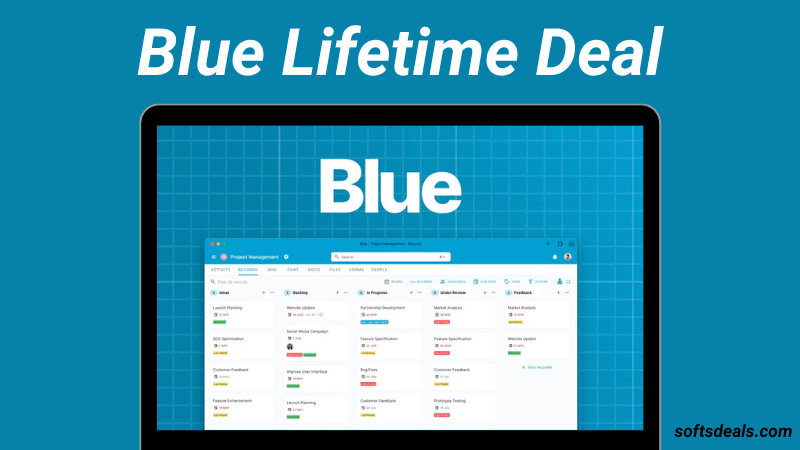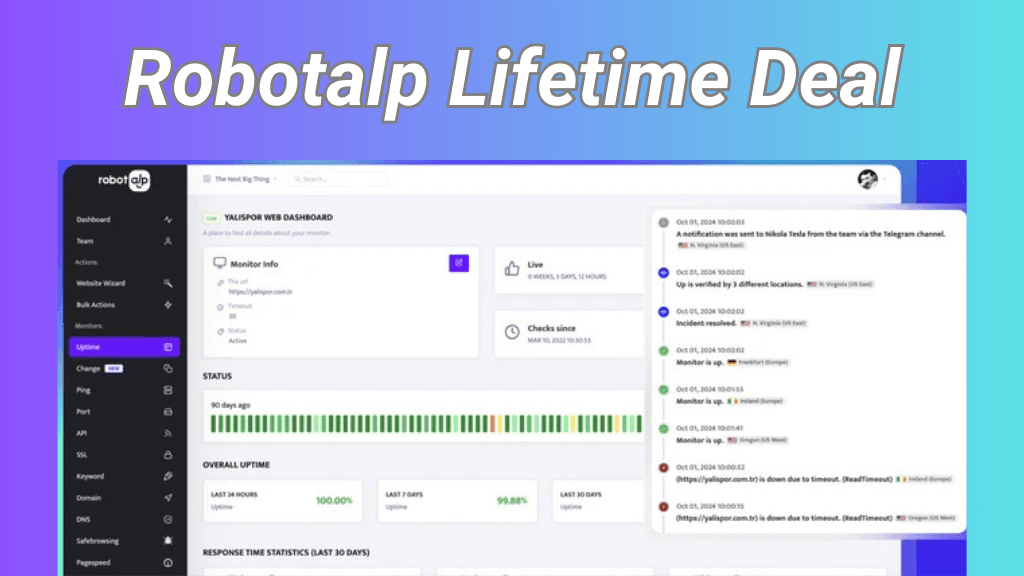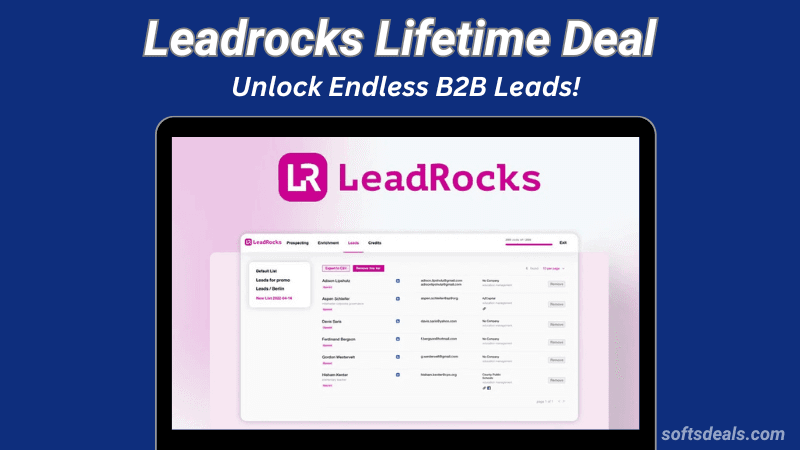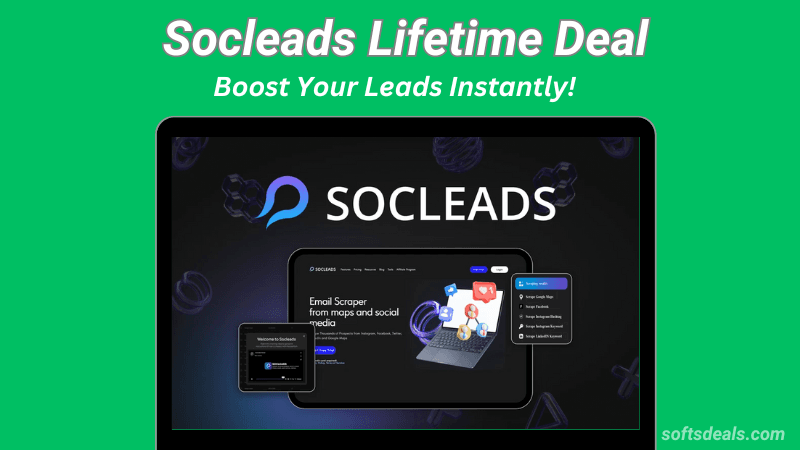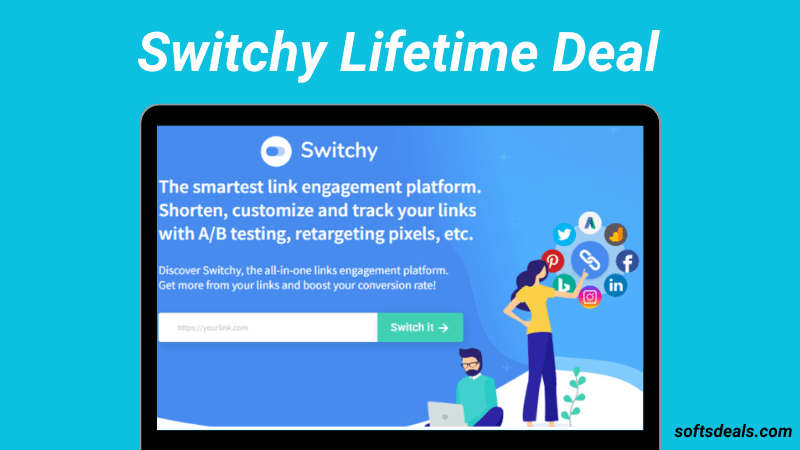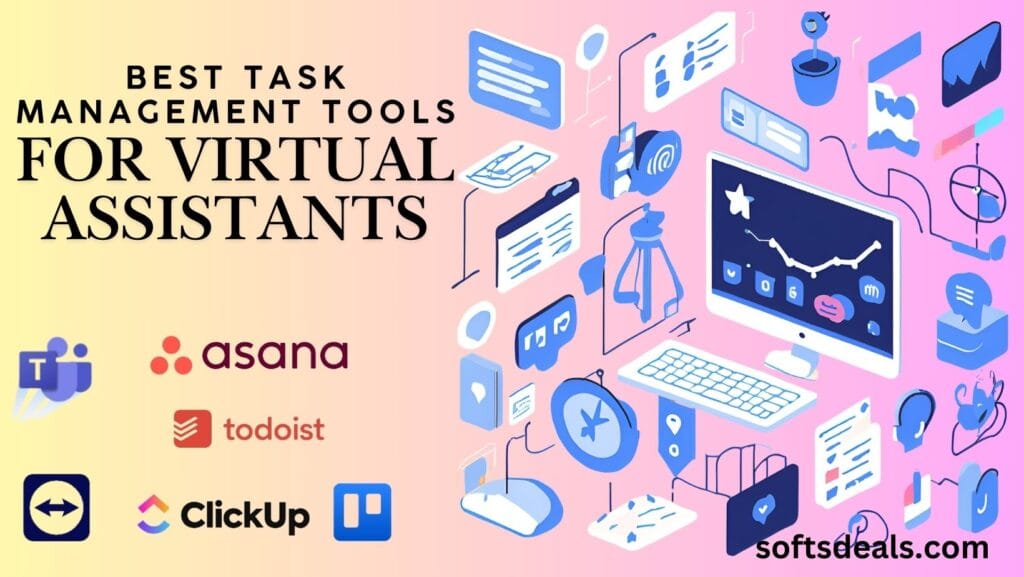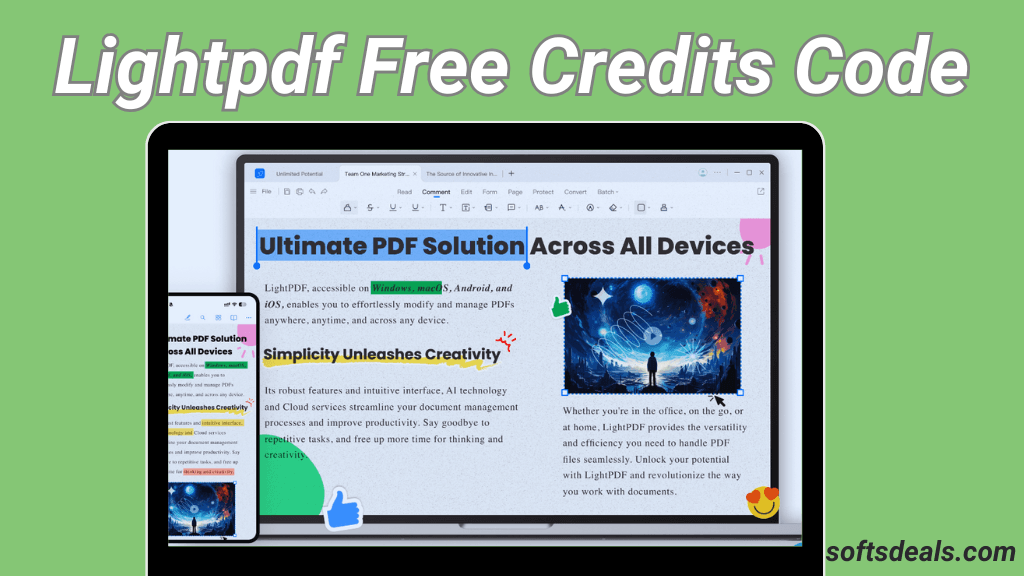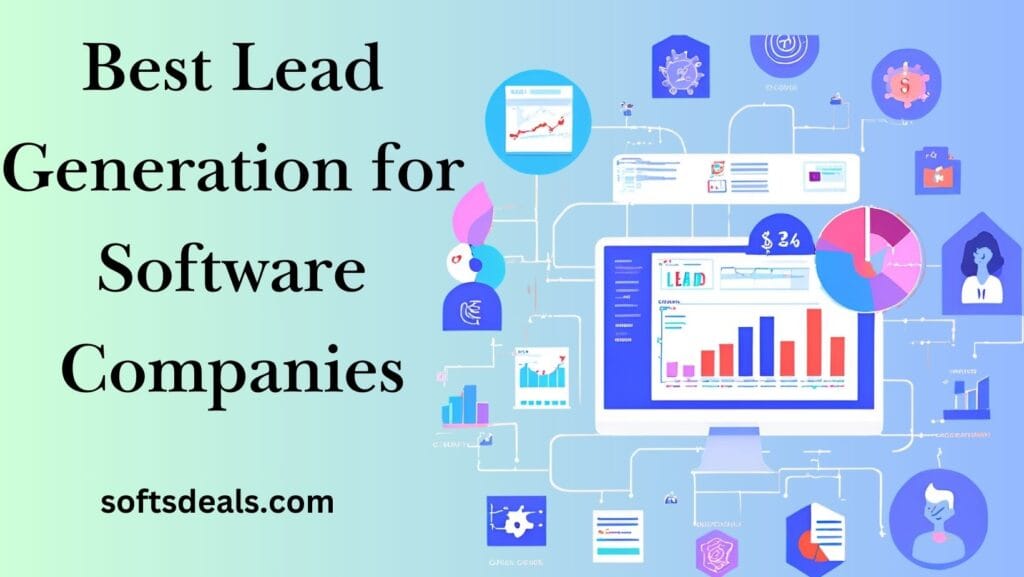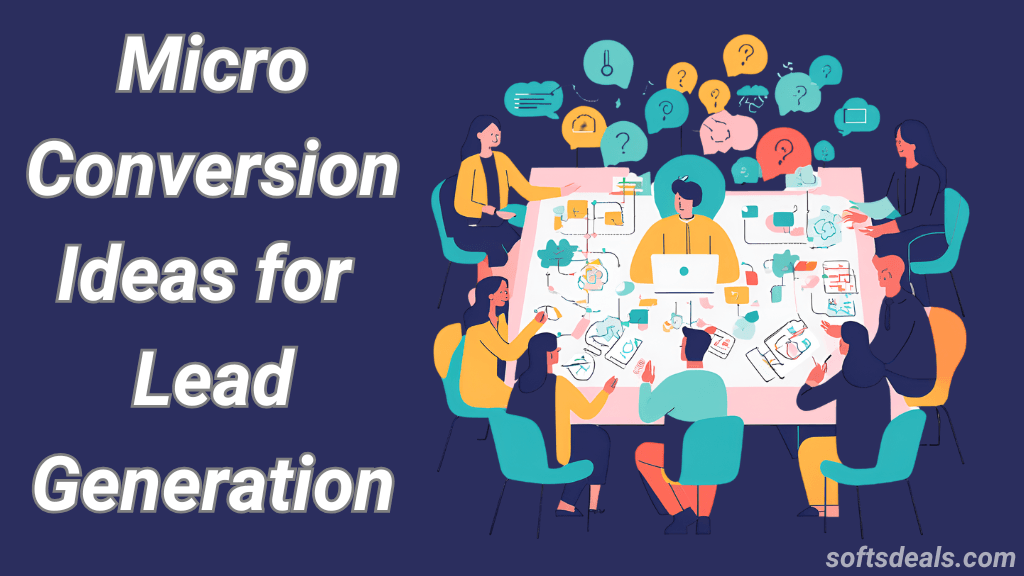Lead Generation for Software Companies. Effective strategies can drive growth and success.
Software companies face a unique challenge in attracting and converting leads. Unlike other industries, the software sector often deals with complex products and services. The right lead generation techniques can make a huge difference. From targeted content to leveraging social media, each method has its own benefits.
This blog post will explore the best lead generation strategies tailored for software companies. With these insights, you can boost your outreach efforts and secure more qualified leads. Whether you’re a startup or an established firm, these strategies can help you achieve your goals. Dive in to discover the best practices for lead generation in the software industry.

Top Strategies
Lead generation is essential for software companies. Finding effective strategies is crucial for growth and revenue. Here, we explore the top strategies that can boost lead generation for software companies.
Content Marketing
Content marketing is a powerful tool for generating leads. Creating valuable content attracts potential customers. Here are some ways to leverage content marketing:
- Blogs: Write informative blogs about industry trends, software solutions, and customer success stories. This helps establish your authority and attract organic traffic.
- Whitepapers and eBooks: Offer detailed guides and reports. These can be gated behind a form to collect leads.
- Webinars: Host webinars to share insights and engage with your audience. Webinars allow for real-time interaction and establish trust.
- Case Studies: Showcase your software’s success through detailed case studies. Highlight real-world applications and results.
Consistency and quality are key. Regularly publish content to keep your audience engaged. Use SEO best practices to improve visibility. Optimize content with relevant keywords. Internal linking can also help guide visitors through your site.
| Content Type | Purpose |
|---|---|
| Blogs | Increase organic traffic |
| Whitepapers | Generate leads through gated content |
| Webinars | Engage and educate audience |
| Case Studies | Showcase success stories |
Social Media Engagement
Social media is another effective strategy for lead generation. Engaging with your audience on social platforms can help build relationships and trust. Here are some tips:
- Regular Posting: Share content regularly to keep your audience engaged. Use a mix of content types like articles, videos, and infographics.
- Interactive Content: Create polls, quizzes, and surveys. Interactive content encourages participation and can provide valuable insights.
- Social Listening: Monitor social media for mentions of your brand and industry. Respond to comments and engage in conversations.
- Paid Advertising: Use targeted ads to reach a specific audience. Platforms like LinkedIn and Facebook offer detailed targeting options.
Engagement is crucial. Respond to comments and messages promptly. Personal interactions help build trust and credibility. Collaborate with influencers in your industry to expand your reach.
Analyze your social media efforts. Use analytics tools to track performance and adjust your strategy. Metrics like engagement rate, click-through rate, and conversions are important.
Email Campaigns
Email campaigns are a powerful tool for software companies aiming to generate leads. They allow businesses to reach potential customers directly in their inboxes. With the right strategies, email campaigns can lead to high conversion rates. This section explores how software companies can use personalization techniques and automation tools to enhance their email campaigns.
Personalization Techniques
Personalization is key to making your email campaigns stand out. It involves tailoring the content to the recipient’s preferences and behaviors. Here are some effective personalization techniques:
- Segmenting your audience: Divide your email list into smaller groups based on demographics, behavior, or engagement level. This allows for more targeted messaging.
- Using recipient’s name: Addressing the recipient by their first name in the email can make the message feel more personal.
- Relevant content: Offer content that is relevant to the recipient’s interests or previous interactions with your company.
- Behavioral triggers: Send emails based on specific actions the recipient has taken, such as downloading a whitepaper or attending a webinar.
Here is an example of how personalization can be implemented:
| Personalization Technique | Example |
|---|---|
| Using recipient’s name | Hi John, we thought you might like this new feature! |
| Segmenting by behavior | Since you attended our webinar, here’s a related eBook. |
Automation Tools
Automation tools can streamline your email campaigns and save time. They allow you to set up workflows that automatically send emails based on specific triggers. Here are some popular automation tools:
- Mailchimp: Offers robust automation features including welcome emails, abandoned cart emails, and more. It’s user-friendly and suitable for small to medium-sized businesses.
- HubSpot: Provides advanced automation capabilities. It integrates with CRM systems, making it ideal for larger software companies.
- ActiveCampaign: Known for its powerful segmentation and automation features. It allows for detailed customer journeys and personalized messaging.
- Drip: Designed for eCommerce, but also useful for software companies. It offers complex automation workflows and behavior-based triggers.
Automation tools can help in several ways:
- Consistent follow-ups: Ensure that leads are nurtured with timely and relevant emails.
- Time-saving: Reduce the manual effort required to send emails, allowing your team to focus on other tasks.
- Improved targeting: Send the right message to the right person at the right time, increasing the chances of conversion.
These tools can significantly enhance the effectiveness of your email campaigns, leading to higher engagement and more leads for your software company.
Seo Techniques
Generating leads is crucial for software companies. One of the most effective ways to attract potential clients is through SEO techniques. By optimizing your website, you can improve your visibility on search engines, driving more organic traffic to your site. Here, we will discuss two key aspects of SEO: keyword research and on-page optimization.
Keyword Research
Keyword research is the first step in any successful SEO strategy. It involves identifying the phrases and terms that potential customers use when searching for software services. This helps you understand what your audience is looking for and how to target them effectively.
Here are some steps to conduct effective keyword research:
- Brainstorm Keywords: Start by listing words and phrases related to your software. Think about what problems your software solves and what terms your customers might use.
- Use Keyword Tools: Tools like Google Keyword Planner, SEMrush, and Ahrefs can help you find popular keywords and analyze their search volume.
- Analyze Competitors: Look at the keywords your competitors are targeting. This can provide insights into what works in your industry.
- Focus on Long-Tail Keywords: These are longer, more specific phrases. They may have lower search volume, but they often have higher conversion rates.
Once you have a list of potential keywords, it’s important to categorize them. You can use a table to organize your keywords based on their relevance and search volume.
| Keyword | Search Volume | Relevance |
|---|---|---|
| Project Management Software | 12,000 | High |
| Task Management Tools | 8,000 | Medium |
| Team Collaboration Software | 5,000 | High |
By prioritizing high-relevance keywords with decent search volume, you can tailor your content to attract more leads.
On-page Optimization
On-page optimization is about making sure each page on your website is optimized for your target keywords. This helps search engines understand what your page is about and rank it higher in search results.
Here are some key on-page optimization techniques:
- Title Tags: Include your primary keyword in the title tag. Keep it under 60 characters.
- Meta Descriptions: Write a compelling meta description that includes your target keyword. Keep it under 160 characters.
- Header Tags: Use H1, H2, and H3 tags to structure your content. Include keywords in these headers.
- Content Optimization: Naturally include your keywords in the content. Aim for a keyword density of 1-2%.
- Internal Linking: Link to other relevant pages on your site. This helps search engines crawl your site and improves user experience.
- Image Alt Text: Use descriptive alt text for images. Include your keywords where relevant.
Here’s a simple checklist for on-page optimization:
| Optimization Element | Action |
|---|---|
| Title Tag | Include primary keyword |
| Meta Description | Include primary keyword |
| Header Tags | Use keywords in H1, H2, H3 |
| Content | Maintain 1-2% keyword density |
| Internal Links | Link to relevant pages |
| Image Alt Text | Use descriptive keywords |
By following these on-page optimization techniques, you can improve your website’s search engine rankings and attract more leads to your software company.
Paid Advertising
Lead generation is crucial for software companies looking to grow their customer base. One effective strategy is paid advertising. Paid advertising can help you reach a larger audience quickly. It offers various methods like PPC campaigns and retargeting ads to attract potential clients.
Ppc Campaigns
Pay-Per-Click (PPC) campaigns are a popular method for generating leads. They allow you to place ads on search engines and other platforms. You only pay when someone clicks on your ad. This makes PPC a cost-effective way to attract potential clients.
Here are some benefits of PPC campaigns:
- Immediate Results: Your ads can start showing up as soon as the campaign is live.
- Targeted Audience: You can target specific keywords, locations, and demographics.
- Budget Control: Set your daily or monthly budget to control spending.
To set up a PPC campaign, follow these steps:
- Choose a platform like Google Ads or Bing Ads.
- Identify your target keywords.
- Create compelling ad copy.
- Set your budget and bidding strategy.
- Monitor and adjust your campaign based on performance.
Below is a table summarizing the key elements of a successful PPC campaign:
| Element | Description |
|---|---|
| Keywords | Words or phrases that trigger your ads. |
| Ad Copy | Text that appears in your ads. |
| Budget | Amount you are willing to spend. |
| Bidding | How much you are willing to pay per click. |
Retargeting Ads
Retargeting ads are another powerful tool for lead generation. These ads target users who have previously visited your website. They help keep your brand top-of-mind, encouraging visitors to return and convert into leads.
Key benefits of retargeting ads include:
- Increased Conversion Rates: Retargeted visitors are more likely to convert.
- Cost Efficiency: Lower cost-per-click compared to other ad types.
- Brand Recall: Keeps your brand in front of potential customers.
Steps to set up retargeting ads:
- Install a tracking pixel on your website.
- Create a retargeting audience based on visitor behavior.
- Design engaging ads tailored to this audience.
- Set your campaign budget and duration.
- Track and optimize the performance of your ads.
Here is a table to illustrate the key aspects of retargeting ads:
| Aspect | Details |
|---|---|
| Tracking Pixel | Code snippet placed on your website to track visitors. |
| Audience | Group of users who have shown interest in your site. |
| Ad Design | Creative elements of your retargeting ads. |
| Budget | Amount allocated for the retargeting campaign. |
Networking Opportunities
Generating leads for software companies can be challenging. Networking opportunities play a crucial role in connecting with potential clients. They help build relationships, establish trust, and share knowledge. There are many ways to network effectively. Two of the most impactful are industry events and online communities.
Industry Events
Industry events are a goldmine for lead generation. They bring together experts, enthusiasts, and potential customers. These events offer direct interaction with people interested in your software solutions.
Here are some benefits of attending industry events:
- Face-to-Face Interaction: Personal connections build trust faster than emails or calls.
- Expert Insights: Learn about the latest trends and technologies.
- Networking: Meet potential clients, partners, and investors.
Types of industry events include:
| Event Type | Description |
|---|---|
| Conferences | Large gatherings with speakers, panels, and workshops. |
| Trade Shows | Exhibitions where companies showcase their products. |
| Seminars | Smaller meetings focused on specific topics. |
| Meetups | Informal gatherings of professionals. |
To make the most of these events, prepare in advance:
- Research attendees and speakers.
- Schedule meetings beforehand.
- Have business cards ready.
- Follow up with contacts after the event.
Online Communities
Online communities are another excellent source for lead generation. They provide a platform for discussions and knowledge sharing. You can join forums, social media groups, and professional networks.
Benefits of online communities include:
- Global Reach: Connect with people from around the world.
- 24/7 Interaction: Engage with members anytime.
- Resource Sharing: Share and gain valuable information.
Popular online communities for software companies:
| Platform | Description |
|---|---|
| LinkedIn Groups | Professional groups focused on various industries and topics. |
| Subreddits dedicated to software development and technology. | |
| Stack Overflow | A Q&A site for programmers to share knowledge. |
| GitHub | A platform for developers to collaborate and share projects. |
To leverage online communities effectively:
- Join relevant groups and forums.
- Participate in discussions regularly.
- Share your expertise and provide value.
- Connect with members and build relationships.
Referral Programs
Generating leads is crucial for software companies aiming for growth. One effective strategy is using referral programs. These programs leverage the power of satisfied customers to bring in new leads. Referrals are trusted and often lead to high-quality leads. Let’s explore how to set up effective referral programs for your software company.
Incentive Structures
Creating an attractive incentive structure is key to a successful referral program. The goal is to encourage your existing customers to refer new clients. Here are some popular incentive structures:
- Discounts: Offer a discount on future purchases or subscriptions.
- Cash Rewards: Provide a cash reward for each successful referral.
- Gift Cards: Give gift cards to popular stores or services.
- Exclusive Features: Offer early access to new features or premium services.
Each type of incentive has its own benefits:
| Incentive Type | Benefit |
|---|---|
| Discounts | Encourages repeat business |
| Cash Rewards | Attracts a broad audience |
| Gift Cards | Simple and popular |
| Exclusive Features | Attracts tech-savvy customers |
Choose the incentive that best aligns with your business model and customer preferences. Test different incentives to see which one performs best.
Tracking Success
Tracking the success of your referral program is essential. This helps you understand what works and what needs improvement. Here are some metrics to track:
- Number of Referrals: Count how many referrals are generated.
- Conversion Rate: Measure the percentage of referrals that convert into customers.
- Cost per Referral: Calculate the cost of acquiring a new customer through referrals.
- Customer Lifetime Value (CLTV): Assess the long-term value of referred customers.
Use tools like Google Analytics or CRM software to track these metrics. Regularly review the data to identify trends and adjust your strategy. Here is a simple table to help you track your metrics:
| Metric | Goal | Current Value |
|---|---|---|
| Number of Referrals | 100 per month | 75 |
| Conversion Rate | 20% | 18% |
| Cost per Referral | $50 | $45 |
| Customer Lifetime Value (CLTV) | $500 | $480 |
Regular tracking ensures your referral program remains effective and profitable. Make data-driven decisions to optimize the program and maximize your lead generation efforts.
Lead Magnets
Lead magnets are essential tools for software companies to attract potential customers. They offer valuable content or services in exchange for contact information. This helps companies build a list of leads. Two effective lead magnets for software companies are ebooks and whitepapers, and free trials.
Ebooks And Whitepapers
Ebooks and whitepapers are excellent lead magnets. They provide in-depth information about a specific topic related to your software. Offering these resources for free can attract a wide audience.
Benefits of Ebooks and Whitepapers:
- Showcase your expertise in the industry.
- Provide valuable insights to potential customers.
- Help in building trust and credibility.
Creating engaging ebooks and whitepapers involves several steps:
- Identify common problems your audience faces.
- Research and provide detailed solutions.
- Design the content to be visually appealing.
- Use simple language and clear formatting.
Here is a simple table showing the difference between ebooks and whitepapers:
| Aspect | Ebook | Whitepaper |
|---|---|---|
| Length | 20-50 pages | 5-10 pages |
| Style | Informal, engaging | Formal, data-driven |
| Purpose | Educational | Persuasive |
Free Trials
Free trials are another powerful lead magnet. They allow potential customers to experience your software before making a purchase. This can significantly increase conversion rates.
Advantages of Offering Free Trials:
- Gives users a risk-free way to test your product.
- Demonstrates the value and functionality of your software.
- Builds user confidence and trust.
To make the most of free trials, consider these tips:
- Offer a clear and simple sign-up process.
- Provide helpful onboarding materials and support.
- Set a reasonable trial period (e.g., 14-30 days).
- Follow up with users during and after the trial period.
By implementing these strategies, software companies can effectively use free trials to generate high-quality leads and convert them into paying customers.

Metrics And Analytics
Best lead generation for software companies involves several strategies. But without proper metrics and analytics, it’s hard to know what works. Tracking these metrics helps in making informed decisions. It shows where your efforts pay off and where they need adjustments.
Measuring Roi
Measuring Return on Investment (ROI) is crucial. It tells if your lead generation strategies bring in more revenue than they cost. To calculate ROI, use this formula:
ROI = (Net Profit / Cost of Investment) x 100
For accurate ROI measurement, follow these steps:
- Identify all costs: Include advertising, tools, and manpower.
- Track revenue: Use CRM systems to track revenue from leads.
- Compare: See the difference between revenue and costs.
Here’s a simple table to help you understand:
| Cost | Amount ($) |
|---|---|
| Advertising | 500 |
| Tools | 200 |
| Manpower | 300 |
| Total Cost | 1000 |
Let’s say the revenue from these efforts is $3000. Using the formula:
ROI = (3000 – 1000) / 1000 x 100 = 200%
This means you get 200% returns on your investment. This metric helps you decide whether to continue or change your strategy.
Analyzing Traffic Sources
Knowing where your leads come from helps optimize your efforts. Analyzing traffic sources reveals which channels work best. This way, you can focus on those that bring in more leads.
Use tools like Google Analytics to track traffic sources. Key metrics to look at:
- Referral Traffic: Visits from other websites.
- Organic Traffic: Visits from search engines.
- Direct Traffic: Visitors who type your URL directly.
- Social Traffic: Visits from social media platforms.
Here’s a simple table to track traffic sources:
| Source | Visits | Leads Generated |
|---|---|---|
| Referral | 500 | 50 |
| Organic | 1000 | 200 |
| Direct | 300 | 30 |
| Social | 200 | 20 |
From the table, you can see which source brings in the most leads. If organic traffic is high, invest more in SEO. If referral traffic is low, consider partnerships to increase backlinks.
Consistently analyzing traffic sources helps you understand your audience better. This knowledge helps in creating targeted campaigns that convert.
Frequently Asked Questions
What Is Lead Generation For Software Companies?
Lead generation is attracting potential customers interested in software products or services.
Why Is Lead Generation Important?
It helps software companies find new customers, grow sales, and increase revenue.
How Can Software Companies Generate Leads?
Use strategies like content marketing, social media, email campaigns, and partnerships.
What Are Some Effective Lead Generation Tools?
Tools like HubSpot, Mailchimp, and LinkedIn help track and manage potential leads.
How Does Content Marketing Help In Lead Generation?
Content marketing attracts potential customers by providing valuable information related to software solutions.
What Role Does Social Media Play In Lead Generation?
Social media platforms help engage with a wider audience and attract potential customers.
How Can Email Campaigns Generate Leads?
Email campaigns nurture relationships with potential customers by providing useful information and updates.
What Metrics Should Be Tracked For Lead Generation?
Track metrics like conversion rates, lead sources, and customer acquisition costs.
Conclusion
Effective lead generation powers software companies’ growth and success. Implementing the right strategies attracts more potential clients. Utilize content marketing, social media, and email campaigns. Remember to nurture leads with personalized interactions. Consistent effort and analysis drive the best results.
Stay adaptable and refine your approach. Your software company can thrive with these lead generation tactics. Start today and see the difference. Happy lead generating!
